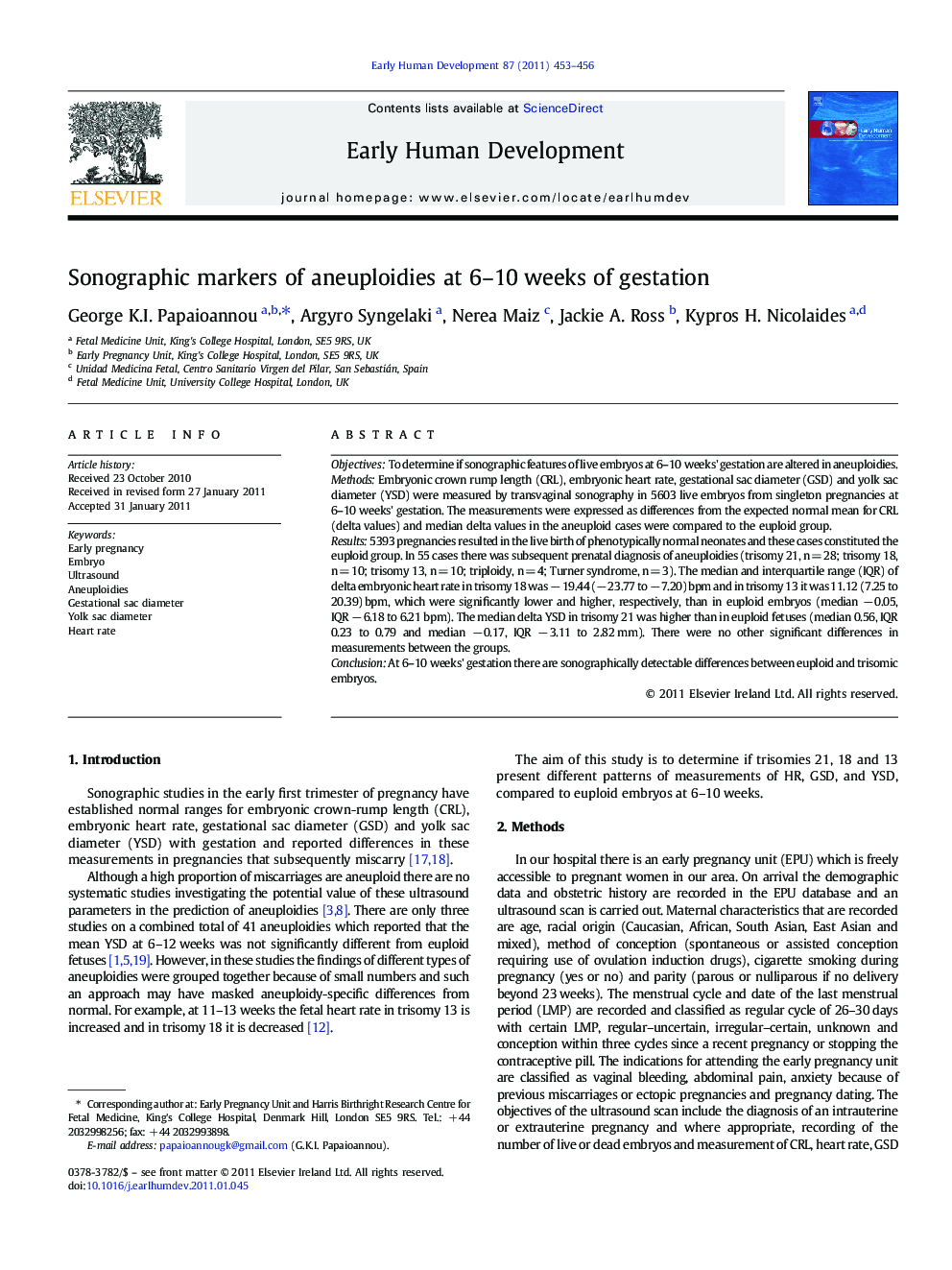| Article ID | Journal | Published Year | Pages | File Type |
|---|---|---|---|---|
| 3917436 | Early Human Development | 2011 | 4 Pages |
ObjectivesTo determine if sonographic features of live embryos at 6–10 weeks' gestation are altered in aneuploidies.MethodsEmbryonic crown rump length (CRL), embryonic heart rate, gestational sac diameter (GSD) and yolk sac diameter (YSD) were measured by transvaginal sonography in 5603 live embryos from singleton pregnancies at 6–10 weeks' gestation. The measurements were expressed as differences from the expected normal mean for CRL (delta values) and median delta values in the aneuploid cases were compared to the euploid group.Results5393 pregnancies resulted in the live birth of phenotypically normal neonates and these cases constituted the euploid group. In 55 cases there was subsequent prenatal diagnosis of aneuploidies (trisomy 21, n = 28; trisomy 18, n = 10; trisomy 13, n = 10; triploidy, n = 4; Turner syndrome, n = 3). The median and interquartile range (IQR) of delta embryonic heart rate in trisomy 18 was − 19.44 (− 23.77 to − 7.20) bpm and in trisomy 13 it was 11.12 (7.25 to 20.39) bpm, which were significantly lower and higher, respectively, than in euploid embryos (median − 0.05, IQR − 6.18 to 6.21 bpm). The median delta YSD in trisomy 21 was higher than in euploid fetuses (median 0.56, IQR 0.23 to 0.79 and median − 0.17, IQR − 3.11 to 2.82 mm). There were no other significant differences in measurements between the groups.ConclusionAt 6–10 weeks' gestation there are sonographically detectable differences between euploid and trisomic embryos.
